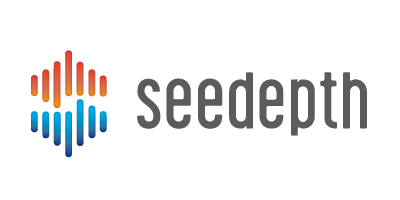PR Measurement Advice From The Client
I started my PR and marketing career almost 15 years ago. At my first agency job, the majority of my day was spent faxing press releases to media outlets, and taping newspaper and magazine articles into giant “clip books” while calculating the number of estimated reader impressions achieved. This was PR measurement. I remember asking myself, “Does the client even look at these clip books? What value are we truly adding to the company’s business objectives?” The only answer I came to was that our value was calculated in ad value equivalency (AVE).
As my career progressed, I continued questioning how PR results were positioned or viewed by clients. And even as PR became more digital and social media was adopted as a common PR medium, PR measurement did not seem to keep pace - mostly we just went from reporting impressions to reporting unique monthly visitors, likes, followers and other vanity metrics. Years later, I was still questioning if the PR reports I spent countless hours putting together where really worth the effort.
It wasn’t until I was in a senior position in an agency that I finally got the chance to significantly impact how my agency reported results. I quickly dove into the task, finding unique and digestible ways to show clients the business value of PR results. I was so proud of the resulting report. It measured activity against strategic objectives, it showed progress towards goals, and it provided hard data to support the impact of media coverage. In fact, I loved it so much, I implemented a similar reporting structure at my next agency.
Then I took a job in-house and became the client, which gave me a whole new perspective on reporting. I now had different needs and requirements being asked of me, which are things I did not consider when on the agency side. Here are some of the things I wish I had taken into account then, to better position results for clients:
- It’s not about you, it’s about the client. One of the biggest mistakes I made on the agency side is that I focused too much on the work we did, rather than on the overall measurement needs of the client. As an agency, you are tasked with certain goals and objectives, but how do your objectives fit into the client’s bigger picture? This should be the question you answer in your report, rather than focusing solely on the results you produce. For example, the client most likely has to report to an executive team and/or board about how overall marketing efforts are impacting the company’s bottom line. How can your report make this easier and connect your results with other marketing activity, stages of the buyer’s journey and priority marketing analytics? Also, executives and board members sometimes need to be educated on why certain metrics matter over others. The more you can help clients with this education factor, the better.
- Competitive comparisons can be meaningless without context. Agencies are often asked to include competitive comparisons in reports. And while it is important to track competitors, it can also be a full time job unless properly focused. Many turn to broad share of voice metrics, but don’t question if the metrics actually show true market progress. Before going down this path, agree with the client on the purpose and focus of competitive tracking. Is there a specific topic or industry that the client is looking to own, or a market opportunity to uncover? Competitive metrics can be a powerful tool, so make this effort count.
- Data should be positioned to help clients make decisions. Reporting data and progress towards goals is helpful, but including actionable advice based on the data maximizes the value of measurement. For example, are you able to identify what’s working and what’s not? Do certain topics or publications get more results than others? Are there recommendations you can make based on these insights? Clients will appreciate your advice, especially when backed by data that can be used to get related initiatives approved by internal stakeholders.
- Clients are willing to pay for impactful measurement. PR reports can be time consuming, and require investments in monitoring and measurement technologies to be impactful. Agencies can be hesitant to make time and technology investments if client budgets are tight. However, if the measurement you provide takes a burden off the client and provides metrics that are translatable to internal reports, it could be a profitable investment. If positioned and executed correctly, you might be surprised by how many clients are willing to pay for this perk, especially if internal resources are limited. They key is in how you position the value when pitching the service. How do your reports differ from competitors? What technologies do you use to measure results? What types of business outcomes have clients benefited from as a result of your reporting?
We are finally in a position to measure results way beyond circulation, unique monthly visitors, global mentions and regional breakdowns, per the tools of the past. There is no excuse to not deliver insightful and compelling reports that don’t cost a client hours and hours of manual labor from the agency team. Every agency should be using an intelligent PR stack to capture and share results in a meaningful way. In our metrics-driven world, it’s the key to long term client retention and agency success.
Mikala Vidal is a repeat customer of SeeDepth who offered to write some insights for us on PR measurement and analytics. This is the first in a series from her.

Hi Mikala, can you recommend an intelligent PR stack? One for a smaller, independent agency with an eye firmly on the budget…